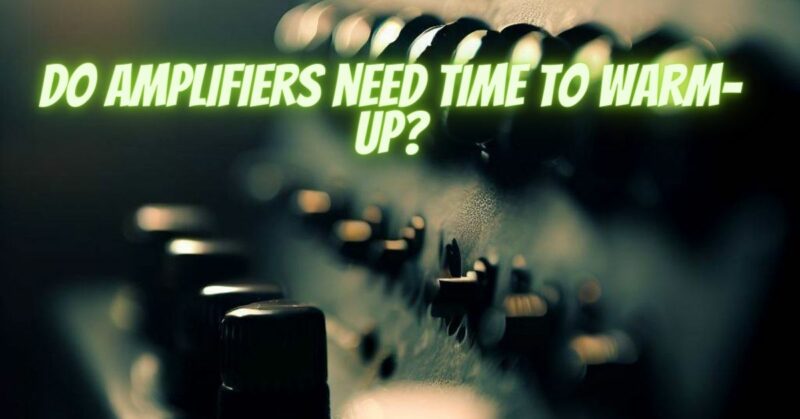In the world of audio equipment, there’s a longstanding belief that amplifiers need time to warm up before reaching their optimal performance. This notion has persisted for decades, leading many audiophiles to practice the ritual of turning on their amplifiers well in advance of a listening session. But is this practice based on scientific evidence, or is it simply a myth? In this article, we will explore the idea of amplifiers needing warm-up time, its origins, and whether there’s any truth to it.
Origins of the Warm-Up Myth
The belief that amplifiers require a warm-up period has its roots in the early days of vacuum tube technology. Vacuum tubes were commonly used in amplifiers and other electronic devices until the advent of solid-state components. These tubes did indeed need time to reach their optimal operating temperature. During this warm-up period, the electrical characteristics of the tubes would stabilize, and the amplifier would deliver its best performance.
However, modern amplifiers, especially those using solid-state components, are a different story. Let’s delve into why the warm-up myth persists and whether it holds any validity in today’s audio landscape.
Solid-State vs. Vacuum Tube Amplifiers
- Vacuum Tube Amplifiers: Vacuum tube amplifiers, with their glowing tubes and warm, harmonically rich sound, did benefit from a warm-up period. This was necessary for the tubes to reach their operating temperature and stabilize. Audiophiles who prefer tube amplifiers may still adhere to a warm-up routine.
- Solid-State Amplifiers: In contrast, solid-state amplifiers, which have largely replaced vacuum tubes, do not require a warm-up period in the same way. Solid-state components, such as transistors and integrated circuits, are designed to operate consistently from the moment they are powered on. They don’t experience the same temperature-dependent variations that tubes do.
Debunking the Warm-Up Myth
While the warm-up myth may have been relevant in the era of vacuum tubes, it is largely irrelevant for modern solid-state amplifiers. Here’s why:
- Instant Operation: Solid-state amplifiers are designed for instant operation. When you turn on a solid-state amplifier, it’s ready to perform at its best right away. There’s no need to wait for components to warm up.
- Stability: Solid-state components are inherently stable and do not exhibit significant variations in performance due to temperature changes. Once they are powered on, they operate consistently.
- Energy Efficiency: Solid-state amplifiers are energy-efficient and don’t require extended warm-up periods that can consume unnecessary power.
- Consistent Sound: Solid-state amplifiers deliver a consistent sound quality throughout your listening session, without the need for a warm-up period.
The Role of Personal Preference
It’s essential to recognize that audio perception can be influenced by various factors, including psychological ones. Some audiophiles may believe that their amplifiers sound better after a warm-up period because they expect them to. The placebo effect can be powerful in audio perception.
In conclusion, the idea that modern amplifiers need a warm-up period is largely a myth when it comes to solid-state amplifiers. Unlike vacuum tube amplifiers of the past, solid-state components are designed for instant operation and stable performance from the moment they are powered on. While some audiophiles may still choose to indulge in the ritual of warming up their amplifiers, it is not a requirement for optimal sound quality. Ultimately, the enjoyment of music should be the focus, and modern technology allows us to experience high-quality audio without unnecessary warm-up times.


